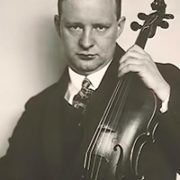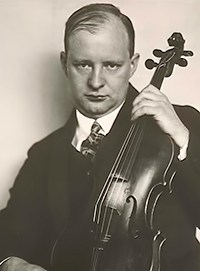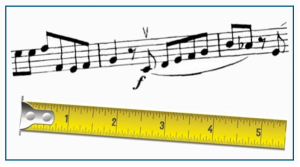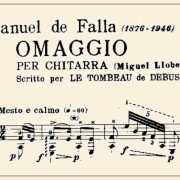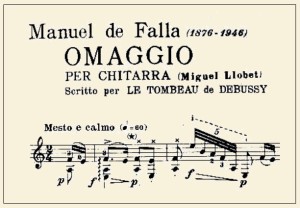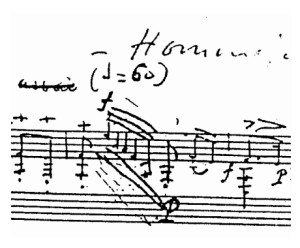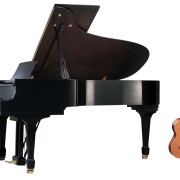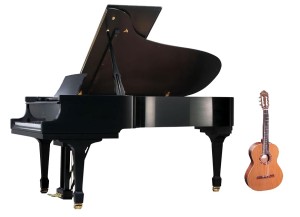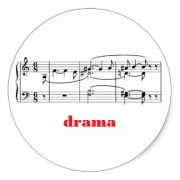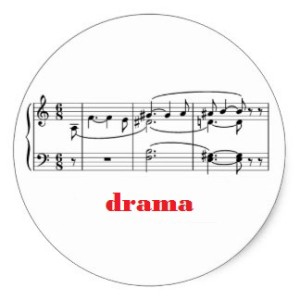A lesson from Hindemith
The fourth movement of Paul Hindemith’s Viola Sonata Op. 25 No.1 reads: “Rasendes Zeitmass. Wild. Tonschönheit ist Nebensache.” It closely translates to “Frantic pace. Wild. Beauty of sound is a minor matter.” The indication leaves no doubt about the intense character or the piece. I find the last phrase to be especially meaningful: although Hindemith wants an exuberant interpretation, he does not directly request to play with a harsh or uncared-for sound; he rather places tone quality as a secondary element.
Since Hindemith was a violist, his indication comes from knowledge and experience. I think there is something for us to learn in its “cautionary” nature: beauty of sound might come at the expense of a necessary wild character and relentless tempo. In other words, based on his own experience, Hindemith could probably imagine violists focusing on maintaining a proper sound quality, and, in so doing, hindering other more important aspects of the work.
I wonder how many of our performances would benefit from keeping a similar mindset. Whether we are beginners, intermediate or advanced players, there are instances when the desire to achieve or maintain our best tone might negatively affect other aspects of our music-making. Let’s discuss a few of them.
Tone quality claims a predominant part of our attention from day one. Certainly, we all want to produce beautiful sounds from the moment we first hold a guitar. As beginner students, we are usually told that sound beauty is of foremost importance. Many methods and teachers explicitly ask us to sound beautifully as early as possible. Intuitively, we think that we are doing something wrong if we buzz or sound harsh notes. (Beginners might not know if they are placing their fingers correctly, but they do notice if notes sound badly.) Therefore, from the first lessons, sound quality becomes a guiding element for us. It is how we get a sense of whether we are doing things correctly or not.
This can be counterproductive. For example, beginners commonly seek to press firmly on every note in order to avoid buzzing. This leads them to rely on stronger left-hand muscles instead of gradually developing the other muscles involved in a more correct –albeit less intuitive– technique. A recurrent example is pressing with flat fingers instead of pressing with the fingertips: in doing so, beginners can use stronger muscles and play more accurately, since a flat finger covers a bigger area than a fingertip. Yet this approach only delays the necessary acquisition of the necessary curved-fingers technique. Slurs are another example: trying to get both plucked and slurred notes to sound cleanly, students might fix their fingers stiffly, relying mainly on arm and wrist motions. A proper slurring technique requires the hammering or pulling finger to move freely, yet this is difficult to achieve on day one–at least with enough sound clarity and volume. A faster and more effective training is to start with slower and targeted motions (which inevitably produce either muted or buzzing notes) until the appropriate muscles are developed and the corresponding motor skills have been acquired and can be engaged at one’s will. Yet another example is barring: students might assume that they are doing it correctly only when all the notes sound clearly, hence applying extra pressure, and positioning their untrained hands inefficiently. A more effective approach could be to completely separate the study of barre positions from pieces, and if our students learn a piece that contains them, allow them to play through them without pressing hardly (muting or buzzing the notes in those passages) and encourage them to focus instead on achieving the correct timing and phrasing.
A point to keep in mind is that beginners must manage and learn many different things, but our brains can only control one thing at a time. It is important to insist on proper placement when developing our students’ technique, although inevitably some of the notes will not sound clean. Encourage them to focus on placement and proper motions, pushing sound quality as a secondary concern for the time being.
After our students reach an intermediate level, one of the most difficult things to teach is to “sing.” Artfully connecting notes, making lines lyrical, is an elusive goal for many players. I believe many times this problem is compounded by an overriding attention on sound quality. Singers or string players, by the sustaining nature of their instruments, necessarily focus on how notes tie with each other. It is readily evident if a note is louder or has a different color than the previous one, even when one is solely focusing on the quality of each individual note. Since the guitar produces quickly decaying sounds, oftentimes a note has faded before the next one (belonging to the same line) is played. (And, being a harmonic instrument, other notes might have been played between the two notes that are part of the line.) Therefore guitarists can focus just as much as singers or string players on the ‘purity’ of individual notes, yet easily miss the connection among them. Again, we can only focus on one thing at the time; I believe that taking the attention off of producing always beautiful notes, and encouraging a more horizontal hearing, can help our students achieve that evading goal of lyricism.
Advanced players can sacrifice other musical aspects as well in their pursuit of maintaining their best sound at all moments. A common occurrence is constantly optimizing the angle in which each of our fingers attack the different strings, which is done in order to obtain the best possible sound out of every note. Since the optimal attack angle of each finger is different, we might unconsciously add tension and/or complexity to our right hand by constantly micro-adjusting for each stroke, depending on which finger acts at a given moment. Chances are that this intricate task affects the phrasing or fluency of our performances. As an experiment, play one of the most complex right-hand pieces in your repertory, and focus on right-hand relaxation, regardless of the sound quality not being optimal or uniform among the fingers. Check if you find it easier to play and, more importantly, if you find that the music flows more naturally as a result. I believe that, given the proper time and attention, this experiment can be quite revealing.
Finally, going back to Hindemith’s indication, let us remember that he does not directly ask to play with a harsh or similar sound, but rather not to make beauty of sound a priority. We should indeed work on achieving and maintaining our best tone quality, but always pondering whether that delays or prevents achieving other desirable goals, such as the acquisition of proper technical skills or the timing, relaxation and flow of our performances.

